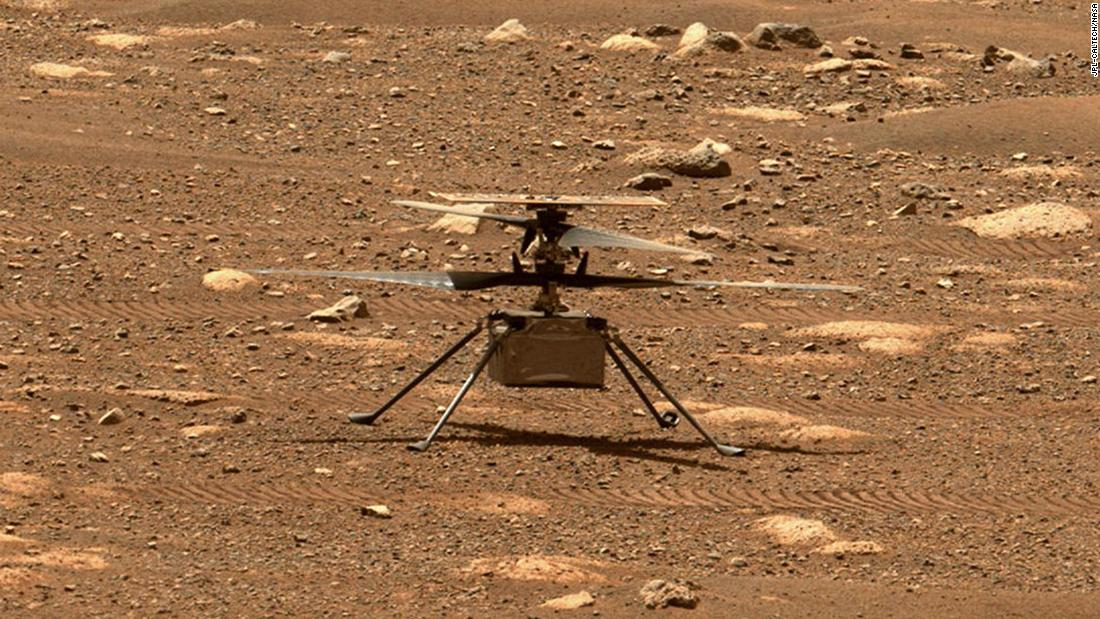
(CNN) – We will have to wait a while before the first controlled and motorized plane lands on another planet. NASA’s ingenious helicopter, originally scheduled to fly to Mars on Sunday, is now scheduled to take off before April 14. Company.
The helicopter sent the data back to crews on Earth Friday night, prompting NASA to reconsider the first aircraft. The team said the helicopter was safe and healthy and would share all its data.
Ingenuity conducted a high-speed test of its rotors on Friday. During this test, the script was aborted because a tracking timer expired.
The initial result of the test occurred when the helicopter attempted to switch the aircraft system from pre-flight mode to airplane mode.
The timer monitors the command line and maintains helicopter security by alerting the system in the event of a problem and closing it until the problem is resolved.
SIGHT: Photos | Ingenious helicopter makes history on Mars: Here are some fun facts
In this case, the agency said the timer did exactly what it was supposed to do.
Meanwhile, the helicopter team on Earth is examining the data to determine the problem that killed the test. After this review, the high-speed test of the helicopter rotors will be reviewed.
If Intelligence were able to fly to Mars for the first time, a 2kg helicopter would fly for a total of about 40 seconds. The helicopter will rotate its two 1.2 meter blades, rise 3 meters in the air, float, make a turn, take a photo, and land back on Mars.
If this first flight is successful, the ingenuity could fly up to four more times this month.
The small helicopter has marked many milestones so far Move your impulses Y Survive the fast nights of Mars.
SIGHT: Xia and NASA release video paying tribute to ingenious helicopter trip to Mars
Now, he has to fly autonomously through the thin Martian atmosphere, without the help of his teams on Earth. Radio signals take 15 minutes and 27 seconds to cross the current distance of 278 million kilometers between Earth and Mars.
The Rover diligence, The helicopter and its crew on Earth help communicate with each other, receiving flight instructions from NASA’s Jet Propulsion Laboratory in Pasadena, California.
The rover will send those plans to the helicopter. Diligence will stop in a search 65 meters away from the helicopter, so you can safely find the plane and take pictures and videos.





:quality(85)/cloudfront-us-east-1.images.arcpublishing.com/infobae/KTKFKR763RBZ5BDQZJ36S5QUHM.jpg)